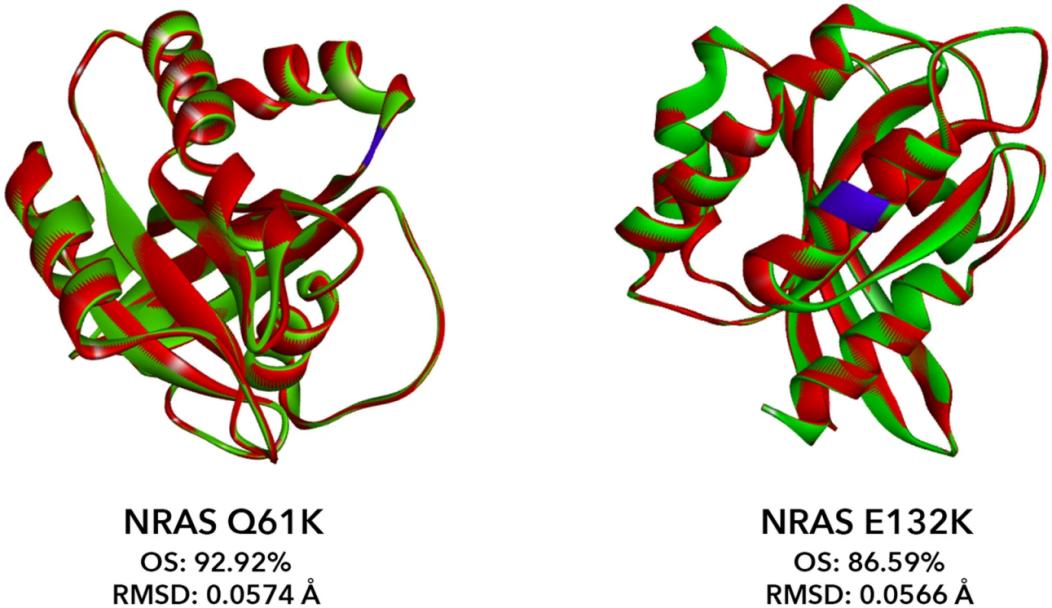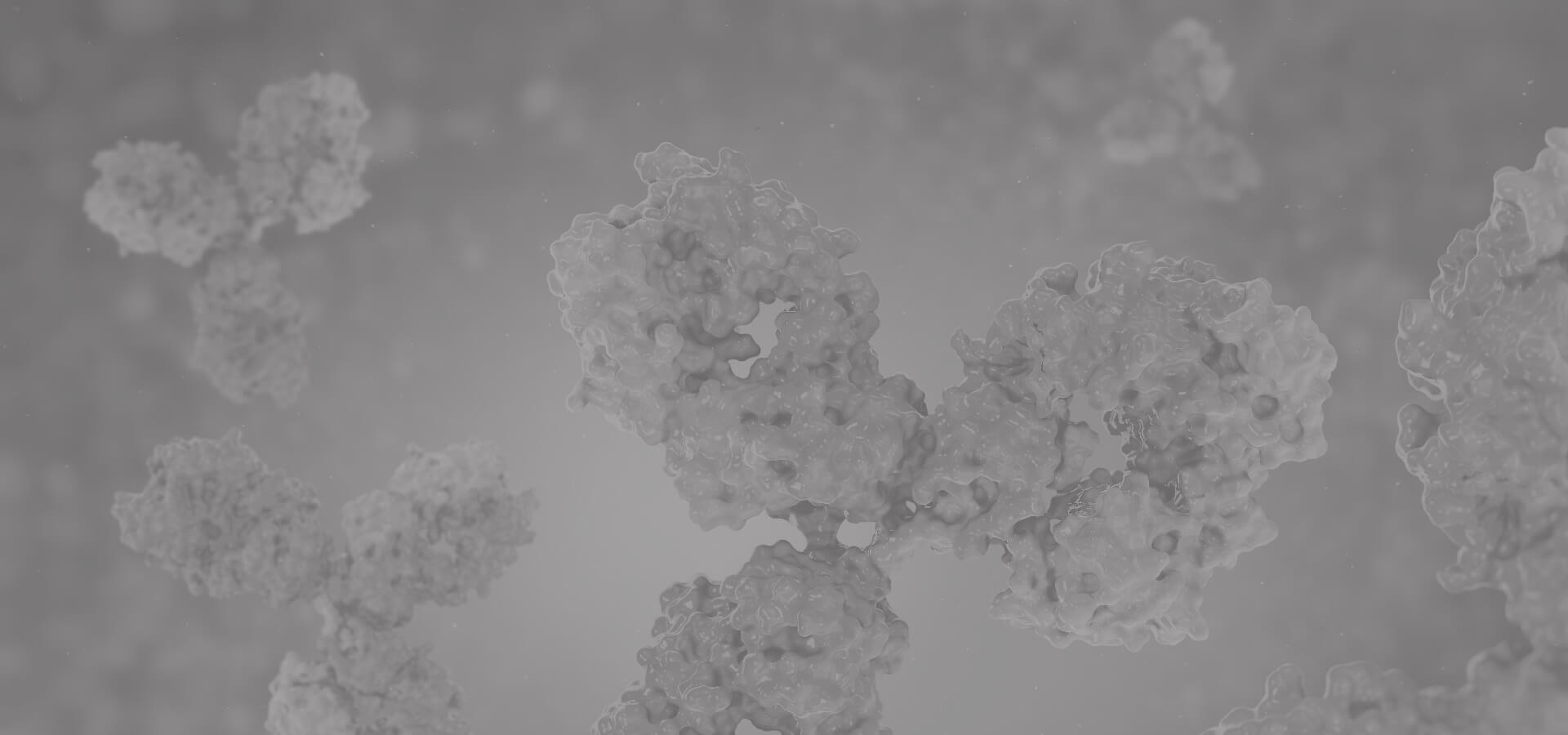NRAS Antibodies
Background
The NRAS gene is a proto-oncogene belonging to the RAS family, mainly encoding a small GTP-binding protein, which plays a key role in cell signal transduction, proliferation and survival. This gene participates in cell growth regulation by activating downstream pathways (such as the MAPK pathway). Its mutation leads to the loss of GTPase activity, continuously activating signal transduction and thereby promoting tumorigenesis. The NRAS mutation was first discovered in human neuroblastoma in 1983 and is the first RAS family member confirmed to be directly related to cancer. The research on its molecular mechanism provides an important foundation for targeted therapy, especially in malignant tumors such as melanoma and leukemia, which has clinical significance and promotes the development of related inhibitor drugs.
Structure of NRAS
The NRAS gene encodes a small GTP-binding protein with a molecular weight of approximately 21 kDa, and its size is highly conserved across different species. This protein belongs to the RAS family and is composed of 189 amino acids, featuring a highly specific sequence and structure. The tertiary structure of the NRAS protein shows a typical G-domain folding, consisting of six β -sheets and five α -helices, and its effector factor binding region is closely related to the GTP/GDP binding state. Amino acids at positions 12, 13 and 61 are common mutation hotspots. Variations at these key sites can lead to the loss of GTPase activity, keeping the protein in an activated state continuously and subsequently triggering excessive activation of downstream signaling pathways. The stability of this molecular conformation plays a decisive role in the occurrence and development of tumors.
 Fig. 1 In silico structural analysis of NRAS Q61K and E132K with reference to NRAS WT.1
Fig. 1 In silico structural analysis of NRAS Q61K and E132K with reference to NRAS WT.1
Key structural properties of NRAS:
- Classical G-domain folding of the RAS family
- Highly conserved GTP/GDP binding region
- Amino acids at positions 12, 13 and 61 are high-frequency mutation hotspots
Functions of NRAS
The main function of the NRAS gene is to act as a molecular switch to regulate cell growth and proliferation signals. Its specific functions include:
| Function | Description |
| GTP/GDP combination | NRAS proteins control the activity of downstream pathways by switching signal transduction states by binding to GTP (activated state) or GDP (inactive state). |
| Regulation of cell proliferation | Activate signaling pathways such as MAPK and PI3K to promote cell cycle progression and division. |
| Survival signal maintenance | Inhibit cell apoptosis through effector pathways and enhance cell viability. |
| Tumorigenesis driver | Mutations at sites 12, 13 and 61 lead to continuous activation of the protein, inducing various cancers such as melanoma and leukemia. |
| Participation in metabolic regulation | Affect cell energy metabolism and nutrient use efficiency, needed to support proliferation biosynthesis. |
NRAS shares highly similar effector protein binding regions with proteins of the same family (such as HRAS and KRAS), but the differences in their tissue expression specificity and mutation spectra lead to different carcinogenic pathological mechanisms. The NRAS mutant protein significantly weakened the GAP-induced hydrolysis reaction, resulting in the loss of GTPase activity and the continuous activation of the signal.
Applications of NRAS and NRAS Antibody in Literature
1. Giannou, Anastasios D., et al. "NRAS destines tumor cells to the lungs." EMBO molecular medicine 9.5 (2017): 672-686. https://doi.org/10.15252/emmm.201606978
Studies have found that NRAS mutations promote the interaction between tumor cells and pulmonary blood vessels and myeloid cells by regulating the expression of IL-8-related chemokines, and drive the targeting process of lung cancer metastasis. Inhibiting this chemokine signal can effectively block lung metastasis mediated by NRAS.
2. Ekvall, Sara, et al. "Mutation in NRAS in familial Noonan syndrome–case report and review of the literature." BMC medical genetics 16.1 (2015): 95.https://doi.org/10.1186/s12881-015-0239-1
Research has found that the c.179G>A mutation of the NRAS gene leads to Noonan syndrome, with clinical manifestations including freckles, cafe-au-lait spots and hearing loss. No significant increase in the risk of juvenile myelomonocytic leukemia has been observed, highlighting its correlation with pigmentation lesions.
3. Valentín-Bravo, Francisco Javier, et al. "Análise do valor prognóstico dos marcadores BRAF e NRAS no melanoma da conjuntiva e revisão da literatura." Arquivos Brasileiros de Oftalmologia 86.5 (2023): 1-6. https://doi.org/10.5935/0004-2749.20230071
Research has found that the mutation rates of NRAS and BRAF in conjunctival melanoma are both 25%, which are significantly associated with high tumor recurrence rates and systemic metastasis, and are important risk factors and potential therapeutic targets for poor prognosis.
4. Pang, Jia Meng, et al. "MicroRNA-708 emerges as a potential candidate to target undruggable NRAS." PLoS One 18.4 (2023): e0284744.https://doi.org/10.1371/journal.pone.0284744
Research has found that miRNA-708 specifically inhibits the expression of mutant proteins in the 3'utr region of the NRAS gene by targeting it, thereby blocking downstream signaling pathways, providing a new precise treatment strategy for NRAS-driven cancers.
5. Lian, Shen-Yi, et al. "KRAS, NRAS, BRAF signatures, and MMR status in colorectal cancer patients in North China." Medicine 102.9 (2023): e33115.https://doi.org/10.1097/MD.0000000000033115
This study analyzed 369 patients with colorectal cancer, and the NRAS mutation rate was 1.6%. KRAS mutations and mismatch repair deficits (dMMR) are associated with clinical features such as tumor location and differentiation, and dMMR is a positive prognostic indicator. However, KRAS mutations predict a poorer overall survival period for patients in stage IV.
Creative Biolabs: NRAS Antibodies for Research
Creative Biolabs specializes in the production of high-quality NRAS antibodies for research and industrial applications. Our portfolio includes monoclonal antibodies tailored for ELISA, Flow Cytometry, Western blot, immunohistochemistry, and other diagnostic methodologies.
- Custom NRAS Antibody Development: Tailor-made solutions to meet specific research requirements.
- Bulk Production: Large-scale antibody manufacturing for industry partners.
- Technical Support: Expert consultation for protocol optimization and troubleshooting.
- Aliquoting Services: Conveniently sized aliquots for long-term storage and consistent experimental outcomes.
For more details on our NRAS antibodies, custom preparations, or technical support, contact us at email.
Reference
- Yu, Ryan Timothy D., and Reynaldo L. Garcia. "NRAS mutant E132K identified in young-onset sporadic colorectal cancer and the canonical mutants G12D and Q61K affect distinct oncogenic phenotypes." Scientific reports 10.1 (2020): 11028.https://doi.org/10.1038/s41598-020-67796-8
Anti-NRAS antibodies
 Loading...
Loading...
Hot products 
-
Rabbit Anti-ATF4 Recombinant Antibody (D4B8) (CBMAB-A3872-YC)

-
Mouse Anti-ATP1B3 Recombinant Antibody (1E9) (CBMAB-A4021-YC)

-
Mouse Anti-Acetyl-α-Tubulin (Lys40) Recombinant Antibody (V2-623485) (CBMAB-CP2897-LY)

-
Mouse Anti-CARD11 Recombinant Antibody (CBFYC-0811) (CBMAB-C0866-FY)

-
Rat Anti-ADGRE4 Recombinant Antibody (V2-160163) (CBMAB-F0011-CQ)

-
Mouse Anti-CD1C Recombinant Antibody (L161) (CBMAB-C2173-CQ)

-
Mouse Anti-APOA1 Monoclonal Antibody (CBFYR0637) (CBMAB-R0637-FY)

-
Mouse Anti-ENO1 Recombinant Antibody (8G8) (CBMAB-E1329-FY)

-
Mouse Anti-BPGM Recombinant Antibody (CBYY-1806) (CBMAB-2155-YY)

-
Mouse Anti-CCDC25 Recombinant Antibody (CBLC132-LY) (CBMAB-C9786-LY)

-
Mouse Anti-AHCYL1 Recombinant Antibody (V2-180270) (CBMAB-A1703-YC)

-
Mouse Anti-AAV-5 Recombinant Antibody (V2-503417) (CBMAB-V208-1369-FY)

-
Mouse Anti-BANF1 Recombinant Antibody (3F10-4G12) (CBMAB-A0707-LY)

-
Mouse Anti-CD83 Recombinant Antibody (HB15) (CBMAB-C1765-CQ)

-
Mouse Anti-CD24 Recombinant Antibody (ALB9) (CBMAB-0176CQ)

-
Rat Anti-CD63 Recombinant Antibody (7G4.2E8) (CBMAB-C8725-LY)

-
Mouse Anti-14-3-3 Pan Recombinant Antibody (V2-9272) (CBMAB-1181-LY)

-
Rabbit Anti-AKT2 (Phosphorylated S474) Recombinant Antibody (V2-556130) (PTM-CBMAB-0605LY)

-
Mouse Anti-AKT1/AKT2/AKT3 (Phosphorylated T308, T309, T305) Recombinant Antibody (V2-443454) (PTM-CBMAB-0030YC)

-
Mouse Anti-CHRNA9 Recombinant Antibody (8E4) (CBMAB-C9161-LY)

- AActivation
- AGAgonist
- APApoptosis
- BBlocking
- BABioassay
- BIBioimaging
- CImmunohistochemistry-Frozen Sections
- CIChromatin Immunoprecipitation
- CTCytotoxicity
- CSCostimulation
- DDepletion
- DBDot Blot
- EELISA
- ECELISA(Cap)
- EDELISA(Det)
- ESELISpot
- EMElectron Microscopy
- FFlow Cytometry
- FNFunction Assay
- GSGel Supershift
- IInhibition
- IAEnzyme Immunoassay
- ICImmunocytochemistry
- IDImmunodiffusion
- IEImmunoelectrophoresis
- IFImmunofluorescence
- IGImmunochromatography
- IHImmunohistochemistry
- IMImmunomicroscopy
- IOImmunoassay
- IPImmunoprecipitation
- ISIntracellular Staining for Flow Cytometry
- LALuminex Assay
- LFLateral Flow Immunoassay
- MMicroarray
- MCMass Cytometry/CyTOF
- MDMeDIP
- MSElectrophoretic Mobility Shift Assay
- NNeutralization
- PImmunohistologyp-Paraffin Sections
- PAPeptide Array
- PEPeptide ELISA
- PLProximity Ligation Assay
- RRadioimmunoassay
- SStimulation
- SESandwich ELISA
- SHIn situ hybridization
- TCTissue Culture
- WBWestern Blot








